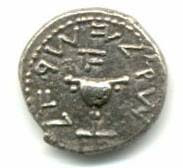Not to mention DNA testing reveals his family tree was a straight line - Philadelphia isn't just a city in Pennsylvania.

The Detroit News: Frail boy-king Tut died from malaria, broken leg
Brother-Sister marriage was very common in Egypt under the Pharaohs, and the tradition continued on occasion with the Ptolemaic Kings of Egypt (The Macedonian Greek dynasty that ruled Egypt after the death of Alexander the Great and ended with the death of Cleopatra and Mark Anthony). Such marriages fit the Isis/Osiris concept of God-Kings and God-Queens ruling Egypt and also kept the royal real estate in the family.Egypt's famed King Tutankhamun suffered from a cleft palate and club foot, likely forcing him to walk with a cane, and died from complications from a broken leg exacerbated by malaria, according to the most extensive study ever of his more than 3,300-year-old mummy.
The findings were from two years of DNA testing and CT scans on 16 mummies, including those of Tutankhamun and his family, the team that carried out the study said in an article to be published Wednesday in the Journal of the American Medical Association.
It also established the clearest yet family tree for Tut, indicating for the first time that he was the child of a brother-sister union.
The study said his father was most likely Akhenaten, the pharaoh who tried to revolutionize ancient Egyptian religion and force his people to worship one god. The mummy shown by DNA to be that of Tut's mother also turned out to be a sister of Akhenaten, though she has not yet been identified.
As with King Tut, it also at times passed down some genetic deformities.
The treasures of King Tut's tomb are truly fantastic. I recall as a child seeing them on display at the Royal Ontario Museum, which was what kicked off my interest in ancient history.
Simply amazing how good science and technology can be used to learn about the ancient world. Now, over three thousand years after his death, we can get closer to learning his likely cause of death and how he lived. In addition the use of DNA testing has let scientists and historians identify whose you're mummy including identifying The Mummy Formerly Known As KV55 as the Pharaoh Akenhaten.
Fox News: DNA Tests Reveal mysteries of Boy-King Tut
In the new study, the mummies of King Tut and ten other royals that researchers have long suspected were his close relatives were examined. Of these ten, the identities of only three had been known for certain.These news reports show a combination of history and science coming together to help unravel the mysteries of the ancient world, and how much more there is to learn, and of how much we thought we know isn't so.
Using DNA samples taken from the mummies' bones, the scientists were able to create a five-generation family tree for the boy pharaoh.
The team looked for shared genetic sequences in the Y chromosome—a bundle of DNA passed only from father to son—to identify King Tut's male ancestors. The researchers then determined parentage for the mummies by looking for signs that a mummy's genes are a blend of a specific couple's DNA.
In this way, the team was able to determine that a mummy known until now as KV55 is the "heretic king" Akenhaten—and that he was King Tut's father. Akenhaten was best known for abolishing ancient Egypt's pantheon in favor of worshipping only one god.
Furthermore, the mummy known as KV35 was King Tut's grandfather, the pharaoh Amenhotep III, whose reign was marked by unprecedented prosperity.
Preliminary DNA evidence also indicates that two stillborn fetuses entombed with King Tut when he died were daughters whom he likely fathered with his chief queen Ankhensenamun, whose mummy may also have finally been identified. (See "King Tut Tomb Fetuses May Reveal Pharaoh's Mother.")
Also, a mummy previously known as the Elder Lady is Queen Tiye, King Tut's grandmother and wife of Amenhotep III.
King Tut's mother is a mummy researchers had been calling the Younger Lady.
While the body of King Tut's mother has finally been revealed, her identity remains a mystery. DNA studies show that she was the daughter of Amenhotep III and Tiye and thus was the full sister of her husband, Akhenaten.
Some Egyptologists have speculated that King Tut's mother was Akenhaten's chief wife, Queen Nefertiti—made famous by an iconic bust. But the new findings seem to challenge this idea, because historical records do not indicate that Nefertiti and Akenhaten were related.

No comments:
Post a Comment